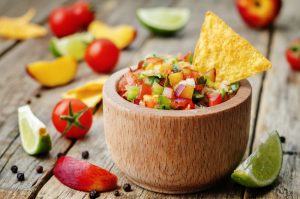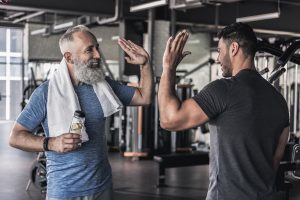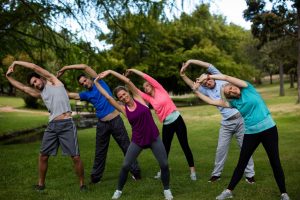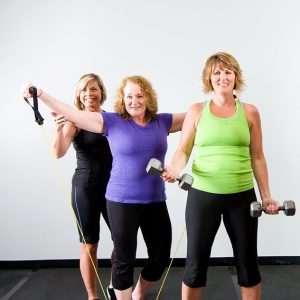Let’s add some protein to your breakfast! Quinoa and eggs paired with fresh veggies make this morning scramble satisfying and flavorful. Bonus points? Pair this meal with a citrus fruit such as grapefruit or an orange which helps the body better absorb the spinach’s calcium and iron.
Ingredients
- 1/2 cup quinoa
- 1 large egg
- 3 large egg whites
- 2 tablespoons shredded Parmesan cheese
- 1 teaspoon dried thyme
- 1/2 large red bell pepper, chopped
- 2 cups fresh spinach, chopped
- 1 stalk green onion, chopped
Directions
- In a small pot, bring 3/4 cups water to a boil over high heat. Add the quinoa and return to the boil, then cover and reduce to low. Cook for 15 minutes, then uncover and fluff, all the water should be absorbed. Let cool, uncovered.
- In a medium bowl, whisk the egg and egg whites until mixed, then stir in Parmesan cheese and thyme. Stir in the cooled quinoa. Reserve.
- Coat a large saute pan with a spritz of olive oil then set over medium-high heat; add the bell pepper, spinach and green onion. Stir for 2 minutes, until the peppers soften. Add the quinoa mixture and stir, reduce the heat to medium. Scrape the pan as you scramble the mixture. Cook until the eggs are done and the mixture looks dry, about 3 minutes.
Serves: 2
Serving size: 1 1/2 cups
Nutrition: Calories: 258
Total Fat: 7g; Cholesterol: 96mg; Sodium: 230mg; Carbohydrate: 32g; Dietary Fiber: 5g; Sugar: 3g; Protein: 18g
Original recipe from My Fitness Pal can be found here!

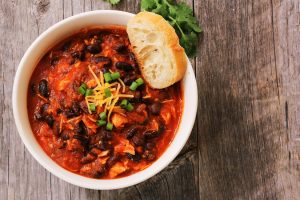
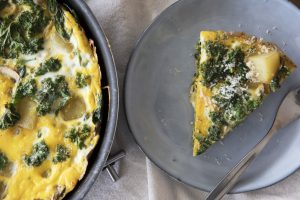
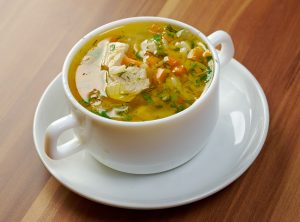 2 Tablespoons olive oil
2 Tablespoons olive oil